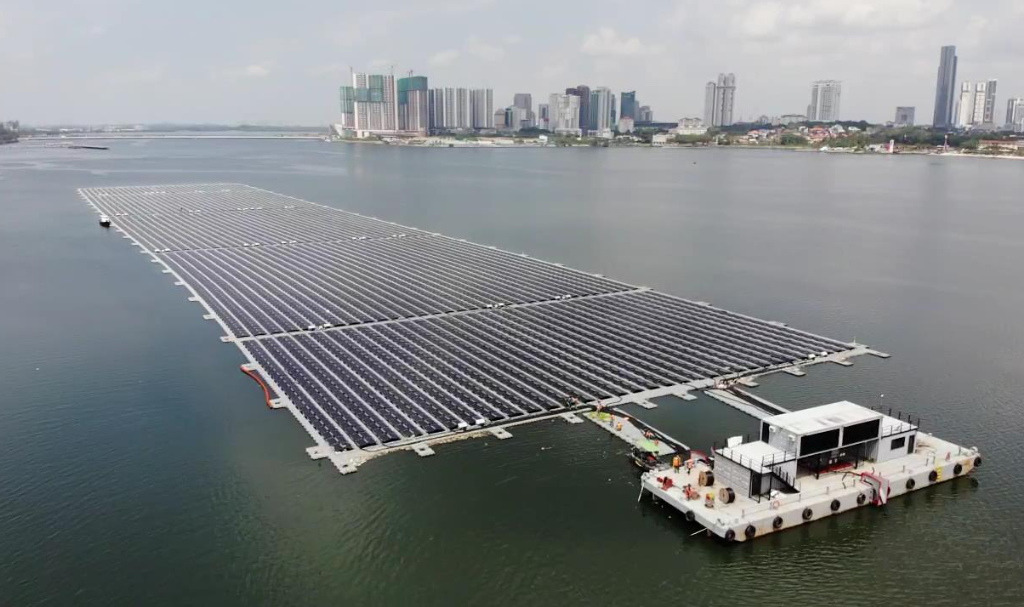[ad_1]

AsianScientist (Apr. 6, 2021) – In a classic case of turning lemons into lemonade, sunny Singapore intends to put its wealth of solar energy to good use: by installing of one of the world’s largest offshore floating solar farms.
Fully installed last March 23, 2021 by Sunseap Group—Singapore’s leading solar energy provider—the solar farm in Johor Straits is set to produce roughly 6 million kilowatt-hours (kWh) of energy per year.
For most of 2020, people stayed home—office buildings were shut, roads emptied and shops closed. Unsurprisingly, energy use around the world fell drastically, with countries like India showing a decrease of up to 15 percent.
In theory, this reduced energy consumption should have lowered carbon dioxide emissions. Yet, according to the World Meteorological Organization, the change was no more than a blip—reducing overall carbon dioxide emissions by up to 7.5 percent at most.
To create tangible, long-term change, experts urge that we reduce our reliance on fossil fuels and consider renewable, low-carbon energy sources instead.In Singapore, however, doing so is easier said than done.
For instance, commercial wind turbines typically operate at speeds of 4.5 m/s and above. However, the country’s average wind speed is only about 2 m/s. To make things even trickier, the Republic lacks a river system with fast-flowing water—removing hydroelectric power from the equation.
Accordingly, solar energy has emerged as the country’s best bet to achieve sustainable and self-sufficient energy. In land-scarce Singapore, floating solar farms are especially an ideal way to harness solar energy without taking up precious space on the island.
With 13,312 panels and over 30,000 floats, Sunseap’s floating solar farm could offset an estimated 4,258 tons of carbon dioxide, which is roughly equivalent to the emissions from over 900 passenger vehicles.
To withstand changing weather conditions and the sea’s constant motion, the solar farm also features a mooring system for stability—accounting for unique factors like shipping routes and even the presence of barnacles in the process.
All in all, the newly-installed floating solar farm puts Singapore on the track to reduce carbon emissions by 36 percent from 2005 to 2030. Aside from solar energy, the Republic will continue to explore alternatives like regional power grids and emerging technologies including carbon capture.
“This is an important milestone for Sunseap as we believe that offshore spaces like the sea, reservoirs and lakes offer exciting opportunities for land-scarce and densely populated cities to tap on solar energy,” concluded Mr. Frank Phuan, co-founder and CEO of Sunseap Group.
———
Source: Sunseap; Photo: Sunseap.
Disclaimer: This article does not necessarily reflect the views of AsianScientist or its staff.
[ad_2]
Source link